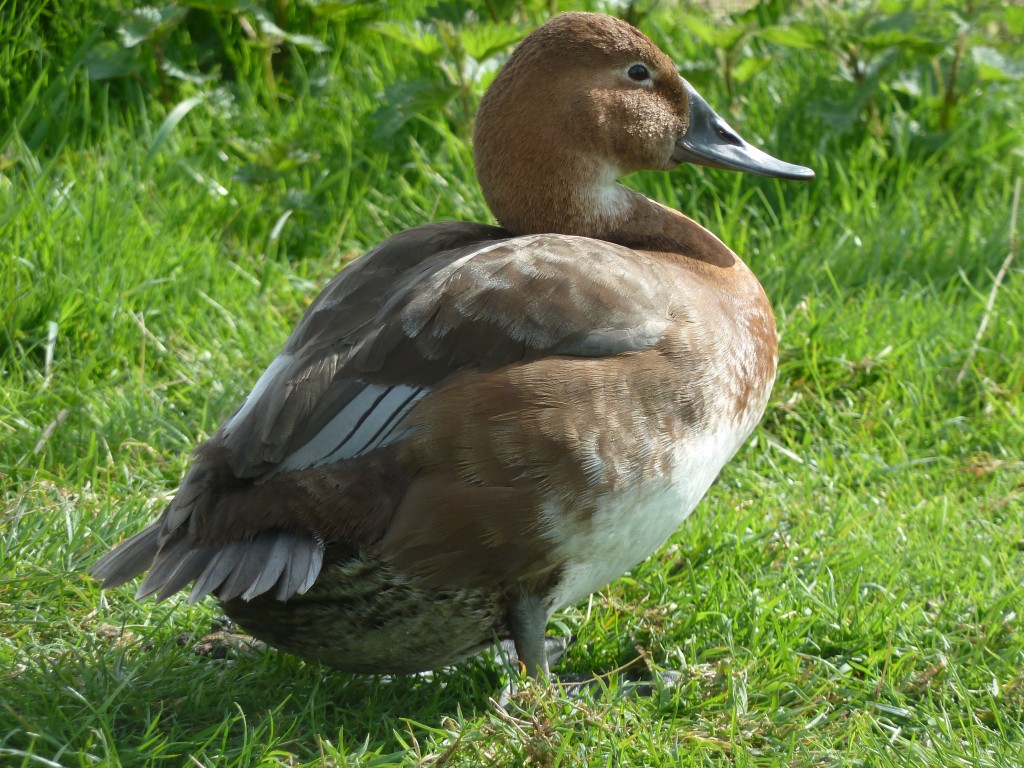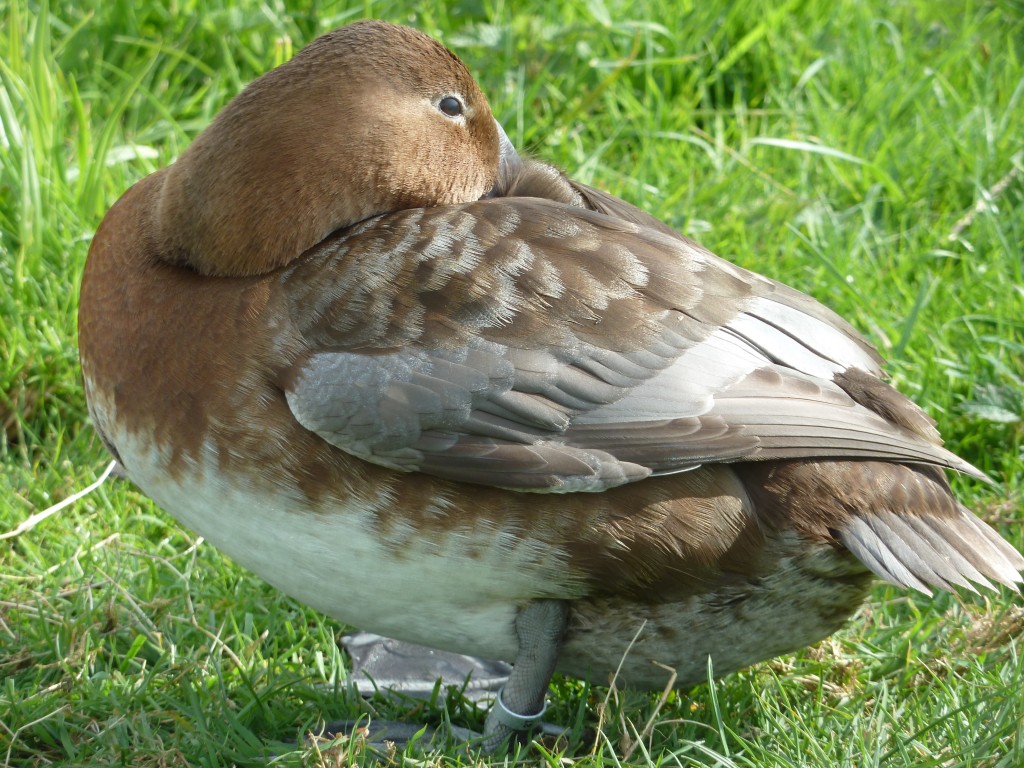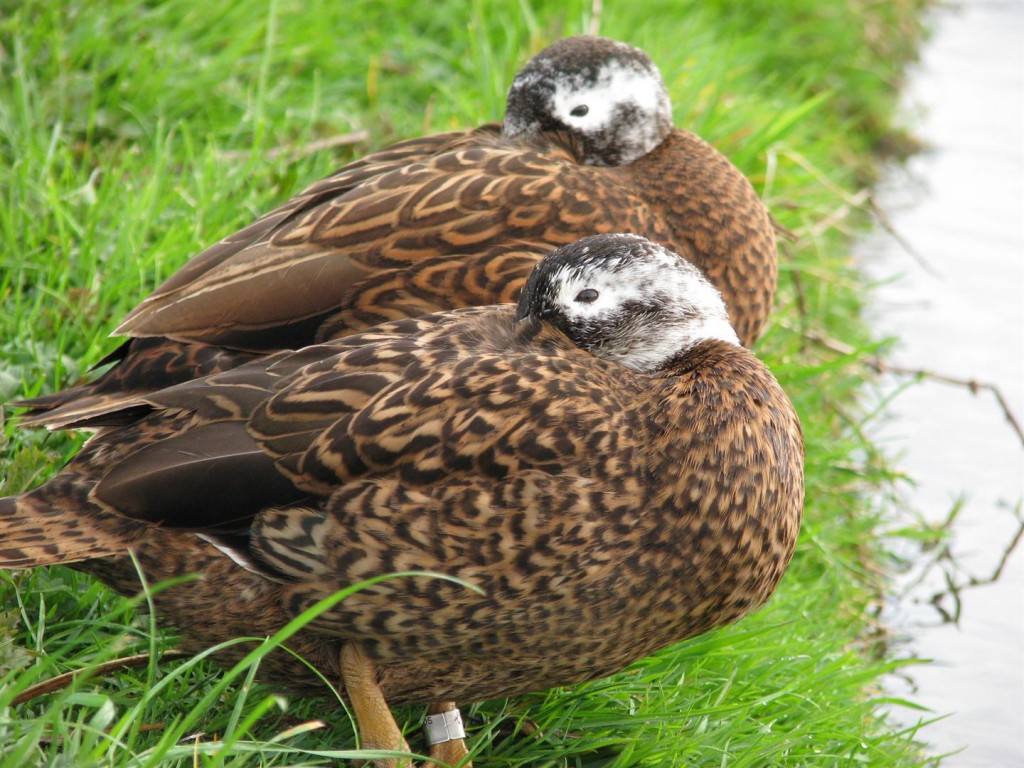Gravid. Heavy. Huge!
Just a little post for those of you who fancy a potentially new technical term!
We all know that ducks lay eggs, and we are all familiar with the term "pregnant," but there is a more appropriate term for avian species. Pregnant is a term reserved for mammals, the bird world has the word "gravid."
We use another at Slimbridge which is a little more self-descriptive; the word "heavy." A bird looks heavy when she is read to lay, or has an egg on the go... and boy is this canvasback ready to pop!

An embryo leaves the ovary and descends, collecting the albumen, 'white' and membrane via the magnum and isthmus regions before settling in the uterus region. As one egg is waiting to be laid, another is already beginning the descent. The egg remains in the Uterus region, collecting the shell before rotating downwards to be laid. As the egg exits the bird via the cloaca, the shell fully hardens and oxidises. The female lays as many eggs as she can afford to lay according to food availability and nesting availability. The full total is subject to how many eggs she can incubate properly, and how many ducklings that she can manage. This is of course dependent on species and area...
This Canvasback has laid a clutch of 7. The Canvasback lays the proportionately largest of all the pochard-type eggs, and 7 is a large clutch. I knew before-hand that the clutch would be large; just look at her! Unlike domestic ducks, the wildfowl we keep are not "egg-machines" and in their ideal world the average duck tends to aim to lay just one clutch. Laying too many eggs could mean that the female would enter the autumn period with depleted energy levels, but she always knows best! We try to keep the breeding season with our captive species as authentic as possible. We provide high protein foods to lead them into the laying season and then deplete it to lead them out again.
Egg laying intervals differ between 1-3 days. The hardest egg to lay is not necessarily the biggest, but is probably owned by the smallest bird or the most specialised bird. The longest interval that I know of is laid by the beautiful Bufflehead.

There is a classic example of clutch size change with the adorable Laysan island teal. This endemic Hawaiian island species once occupied the whole of the Hawaiian islands, but at the beginning of the C20th was limited to just one in a state of near-extinction. After the species achieved a boom of 500 individuals following the elimination of rabbits within their habitat, their future was once again depleted by 70% following drought and disease. After decades of fluctuations they hit a rough carrying capacity of around 700, and it was decided that 42 should be introduced to 2 local islands called the Midway Atoll in 2004. The birds bred in their first year and increased to 200, but Botulism cut them down again by 40%. In 2010 they had increased once again to 350, but following the March Tsunami in 2011 have once again declined by 50% on Laysan and 25% on Midway.

This poor duck has faced so many near extinctions; but survived. Part of the reason could be their voracious breeding habit. It was observed that the average clutch of eggs of 4 on Laysan quickly rose to 5 in the birds that were translocated to Midway Atoll. This increase could be attributed to any number of reasons. These include human bias (choice of birds for translocation) and the stimulation of translocation, but my hunch was that it is a reflection of bird health and perceived food availability.
These little teal also breed very readily in captivity. The female in our first breeding aviary has laid a stunning clutch of 7! Considering our breeding birds are fed like kings and queens however, this is no big surprise!
The seasons seems set to be a good one. The mild winter and wet spring has turned our breeding aviaries into plush nesting opportunities for our unexpectedly plump birds. Let's hope that fertility keeps up with the high numbers!

